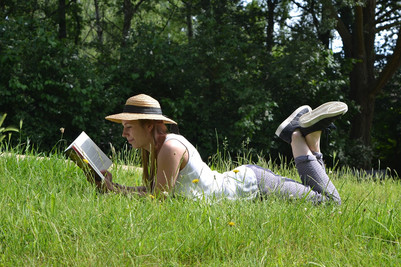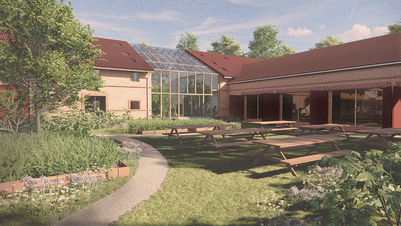
Conference Abstract | Eduardo Abrantes, Linda Lapina and Kristine Samson

The Demise of the Commons?
A Presentation and a Sensory Sound Exploration
This paper engages with the disappearing Amager and Kalvebod commons through 1) a theoretical juxtaposition of commons and publics and 2) a sensory sound installation evoking the multi-layered qualities and voices of the commons.
Amager and Kalvebod commons have a history of entangled nature-cultures. Originally serving as a commons but later used as garbage dump and military shooting grounds, these commons are increasingly becoming a public space for recreational use. However, they also face urbanization and privatization. These different forms of land use and cultural appropriations have, throughout history, formed the commons into a peculiar entanglement of naturecultures with high biodiversity and informal lodging of diverse groups of people.
In Re-enchanting the world Silvia Federici differentiates the common from the public. The public is “owned, managed, controlled, and regulated by and for the state, constituting a particular type of private domain” (Federici 2018: 96). This is not to say that we should abandon the state. However, we follow Federici in suggesting that the commons are defined by its multiplicities of use and by the diversity of its cohabitants which can be formulated as an alternative to both public and private understanding of land as regulation and ownership. Hence, the commons are both an entangled territory, and a process of becoming. Put differently, spatial qualities emerge through processes of affective commoning taking place between species and people alike, and contain entanglements of multiple species and their embodied and affective space making practices in divergent spacemaking practices (Lapina 2017, Fjalland & Samson 2019).
Drawing on material from a cross-disciplinary exploration of the commons held in July 2020, we ask what is lost when the entangled and multi-layered commons become public and accessible for all? For instance, who is expelled when Amager common become part of the liveable city? And liveable for whom? As a sonic and performative enactment of the commons, the conference participant will be able to experience a location based sound installation. The site will, for the duration of the event, become a GPS-tagged zone where anyone on site will be able to listen to a multifocal soundscape through their own mobile devices and headphones - a sonic “commonification” if you will. While each voice has its own refrain and territorial preferences, the listener can only become part of the landscape by her own sensory engagement – and potentially - intrusion into unknown territory. With the sound installation, the presentation seeks to address commons and commoning taking place from situated and affective middles – a middle that is negotiated and processual rather than preconditioned and public.
Literature
Federici, S. (2018). Re-enchanting the World: Feminism and the Politics of the Commons. PM Press / Kairos
Fjalland, E. L. P., & Samson, K. (2019). Reparative Practices: Invitations from Mundane Urban Ecologies.Proceedings. Nordic Design Research Conference, (8)
http://www.nordes.org/opj/index.php/n13/article/view/472
Lapina, L. (2017). “‘Cultivating Integration’? Migrant Space-Making in Urban Gardens.” Journal of Intercultural Studies: Organised Cultural Encounters: Interculturality and Transformative Practices 38.6 (2017): 621–636.
Eduardo Abrantes is a sound artist and artistic researcher. His practice includes performative strategies, sitespecificity and collaborative compositional processes in its approach to sound art/installation/intervention. He has a PhD in Philo- sophy/Phenomenology of Sound (2016) and his most current research project is an interdisciplinary exploration of potential intersections between sound art strategies and mental health environments. He is affiliated to VISPER (Visual Culture and Performance Design) research group at DCA, Roskilde University.
Linda Lapina is a researcher, dancer and a migrant. She works as assistant professor of Cultural Encounters at Roskilde University in Denmark. Her research focuses on affects in contested urban spaces; race and whiteness, based on her own shifting migrant positions in Denmark; and intergenerational loss and morethanhuman embodied memory. She is affiliated to the research group Cultural Encounters at DCA, Roskilde University.
Kristine Samson is associate professor, and an urbanist and ecologist interested in landscape formations in pasts, presents and speculative futures. As a researcher she engages with affective, situated and embodied forms of knowing and is currently interested in walking and listening as ways of exploring cultural and environmental ecologies. She has published widely on urbanism, citizenship, urban culture and informal architecture. She is affiliated to VISPER (Visual Culture and Performance Design) research group at DCA, Roskilde University.















